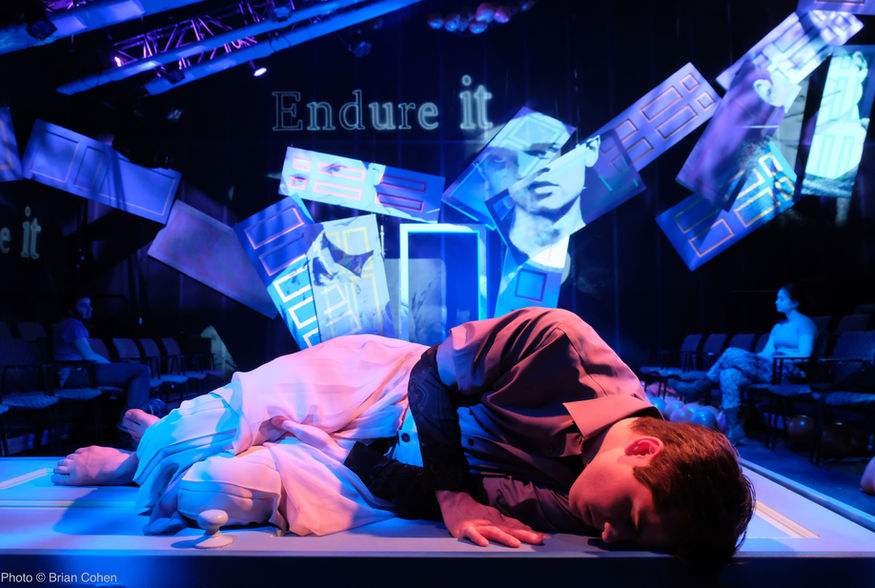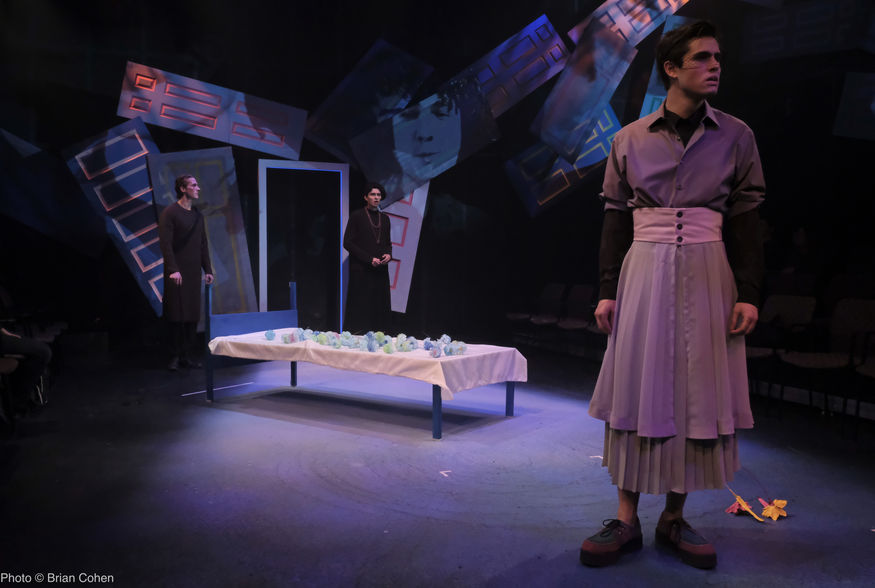Alkestis
February 2018
Carnegie Mellon University
Written by Euripides
Translated by Anne Carson
Directed by Wesleigh Gates
Asst. Director – Nora Gair
Dramaturge – Cassie Clark
Scenic Design – Sasha Schwartz
Costume Design – Natalia Kian
Lighting Design – Zara Bucci
Media Design – Adam J. Thompson
Sound Design – Scott MacDonald
This design was Featured in the Student/Emerging Designer category in the USITT exhibit created for the 2019 Prague Quadrennial
About:
For this production of Alkestis, director Philip Gates blurred the line between cast and audience. Before each performance audience volunteers were selected for certain roles:
(5) The Greek Chorus
(2) Children
(1) Alkestis Body-Double
This demanded a production design that would support these un-rehearsed cast members in ways both practical and artistic.
In practical terms, amplification of their voices would be necessary, which also provided an artistic opportunity. I worked with media designer Adam Thompson to coordinate where the Chorus members were seen and heard during the play. As their faces were projected on the set, their voices followed.
The Chorus would need to convincingly tell an unfamiliar story, and I knew that the sound and music I provided could help them do so. Underscore music was used to set the tone for each Choral Ode, providing a mood and tempo.

When analyzing the script it became apparent that the sonic quality of the house of Admetos—how the characters described it, influenced it, or declared how it should sound—was an important theme. “What is this quiet?” is the first line spoken by the Chorus. I mapped this information to provide a guide for myself as I began writing underscore music for the play. See below the resulting graphic I created early in the design process which guided me as I created underscore music. Quiet is uncertain, unsettling. Loud sounds ranged from celebration, to grief and rage.
Technical Considerations:
Because the underscore music would be used during unrehearsed text, playback had to be flexible. The Chorus read their lines off a large prompting screen and the music had to be carefully cued to provide a fluid and cohesive experience for the audience. Music was cued in Live by Ableton, triggered via MIDI cues sent by QLab. This allowed me to compose semi-flexible loops of audio that were carefully cued to the text being read by the Chorus members. QLab was also sending MIDI cues to a Yamaha QL1 mixing console which controlled five hanging podium mics for the chorus members, processed by the console's built-in Dan Dugan Automixer. Additional audio content was cued in QLab using looping and devamping cues. The end result was a relatively seamless operation for the board op, who could focus on the QLab session and keep an eye on the microphone levels.
Drafting Packet:





















